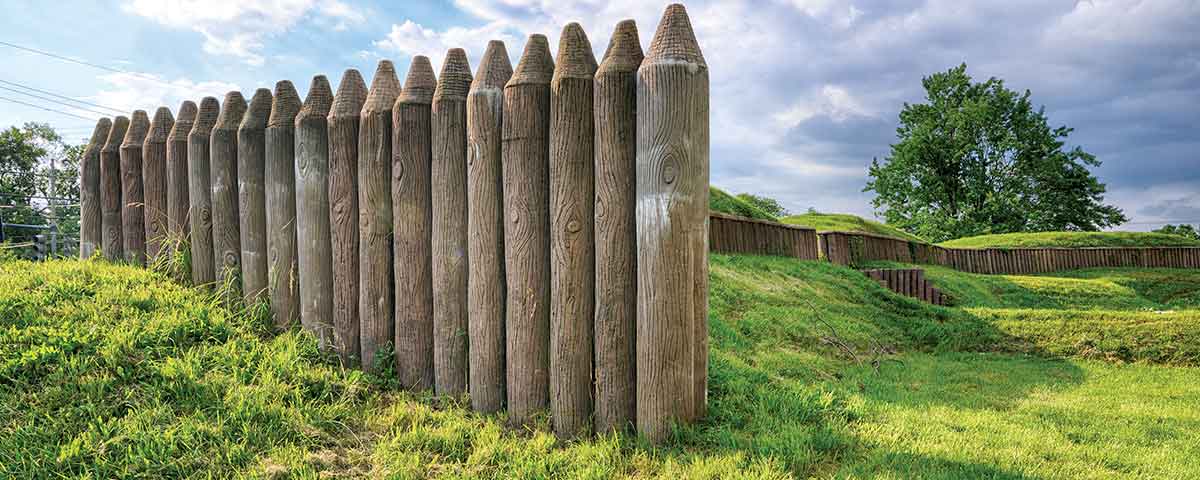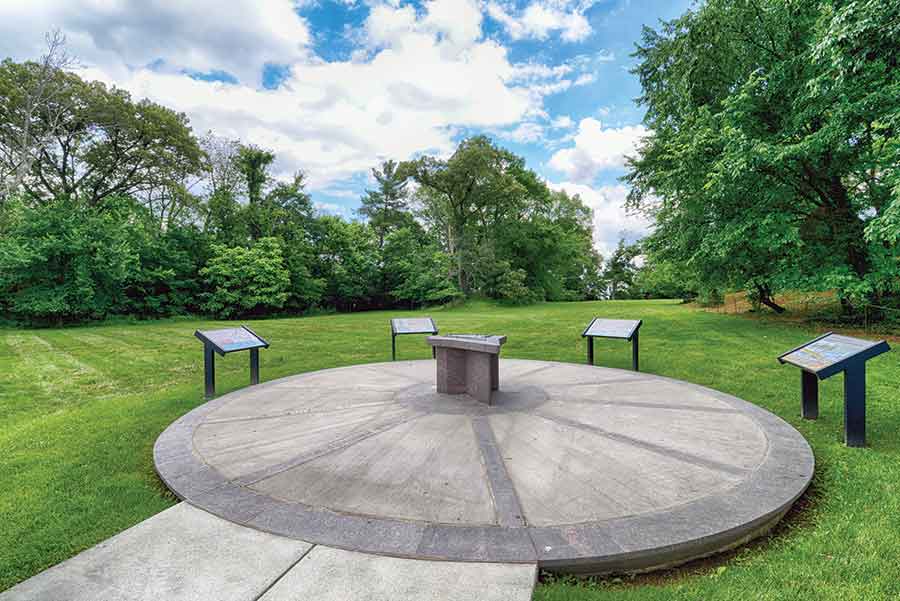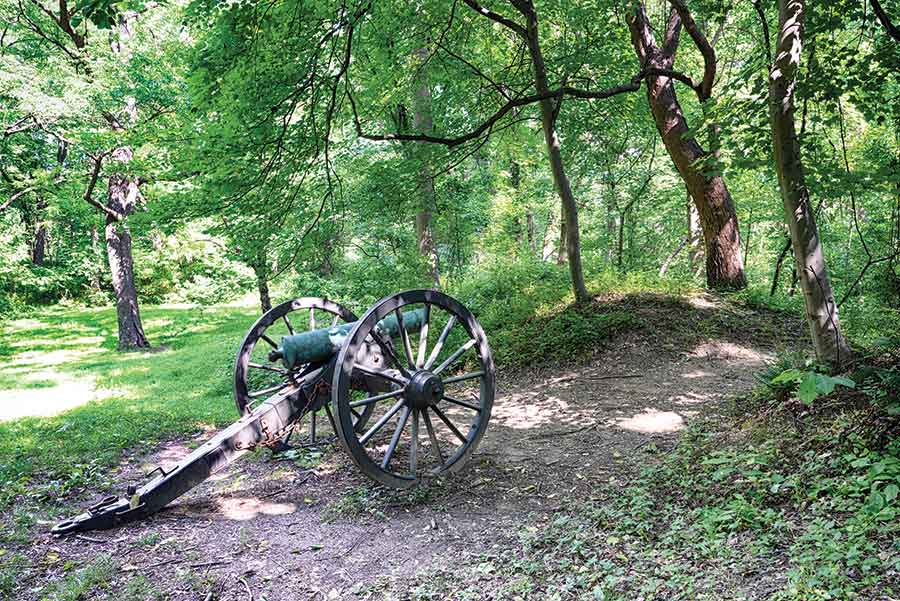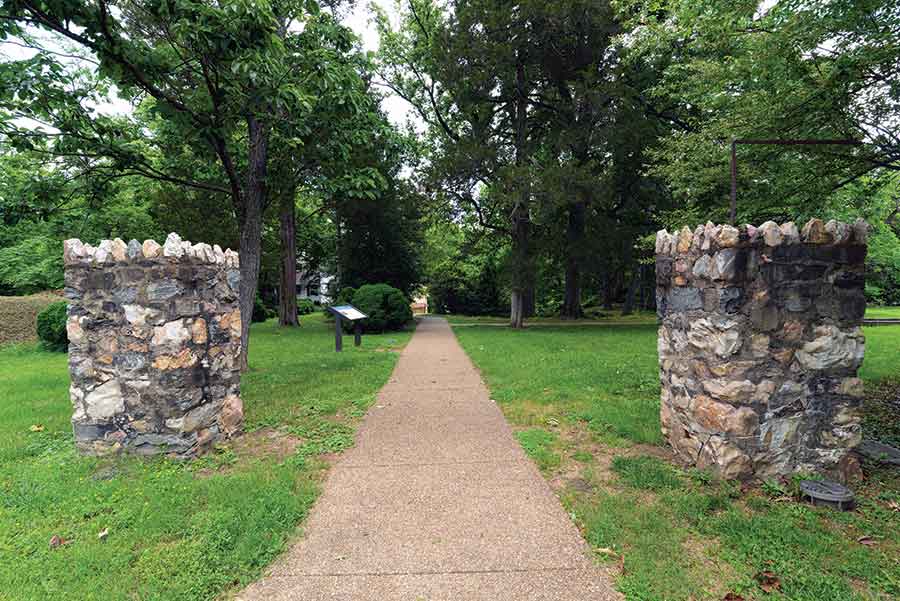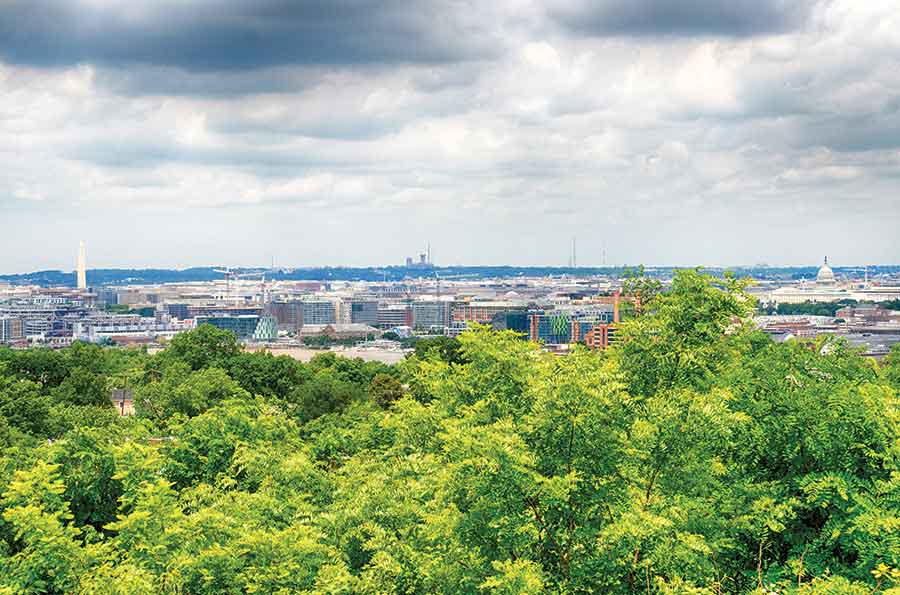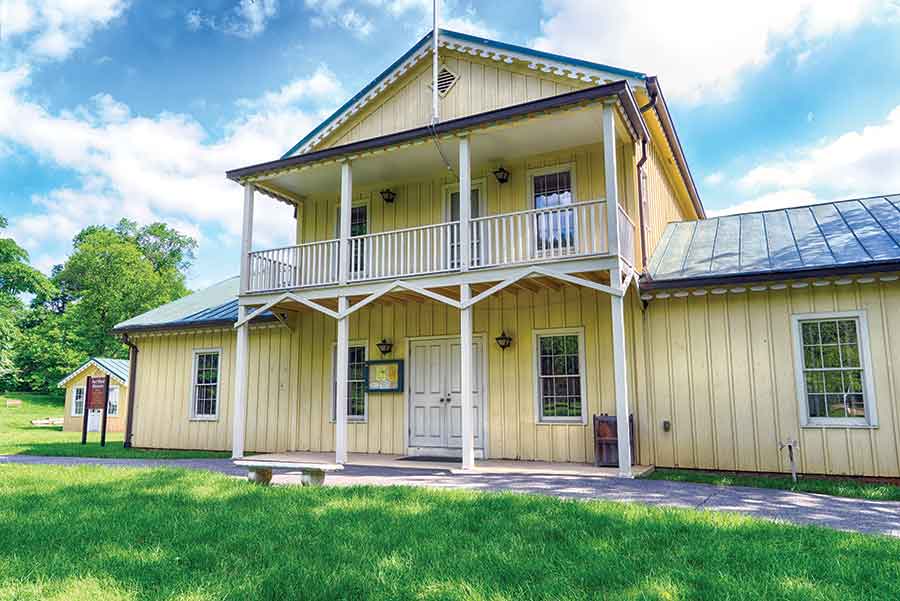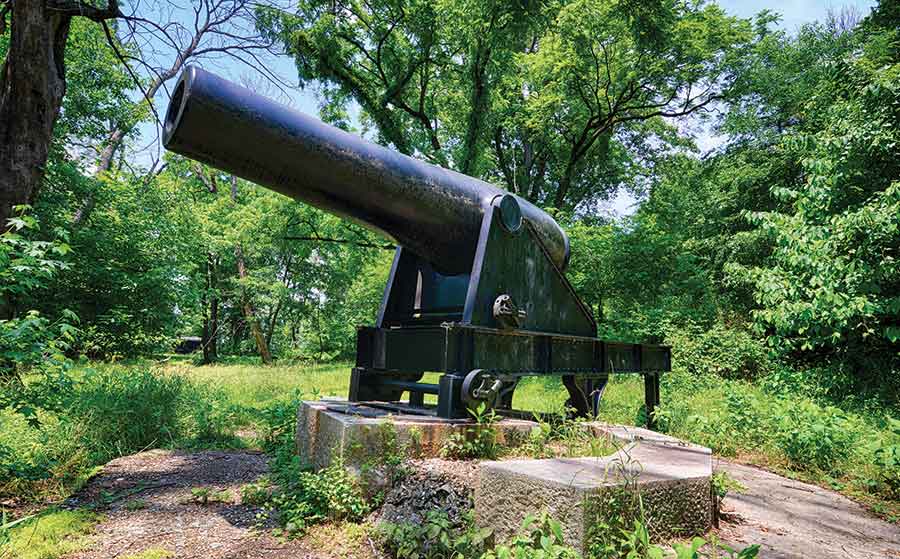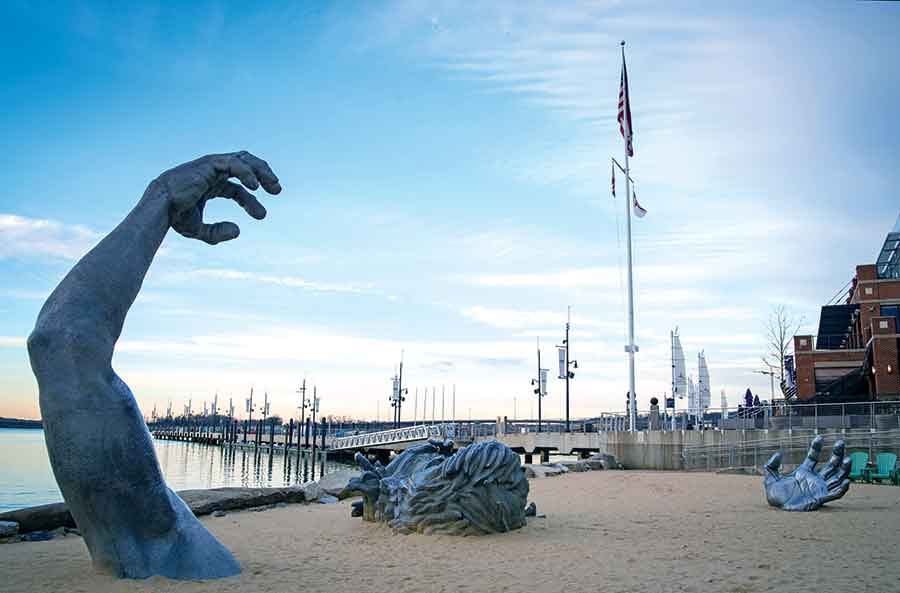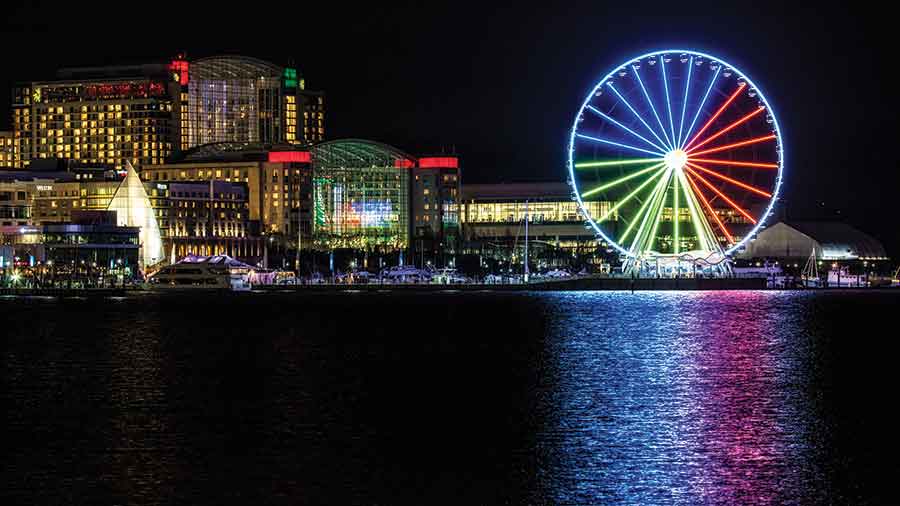Before the Civil War, Washington, D.C., was vulnerable from nearly all sides. The only major fortification was Fort Washington, an early 19th-century brick and stone structure located on the Potomac River 12 miles to the south (now a national park site). When the war began, President Lincoln moved quickly to buttress the lightly defended capital. By the summer of 1861, Union troops had occupied the high bluffs and hills on the river’s Virginia side to develop a system of fortifications, under the direction of the U.S. Army Chief Engineer John G. Barnard, that would encircle the city. By war’s end, that system numbered 68 enclosed forts and batteries, as well as nearly 100 other unenclosed batteries and more than 30 miles of new military roads. So formidable were the defenses that they saw only one battle—at Fort Stevens in July 1864—where Lincoln himself came dangerously close to the action. Today, although several fortifications have been lost to time and development, remembered only by historical markers, nearly two dozen forts and related sites remain viewable in Maryland, D.C., and Virginia, mostly under the care of the National Park Service (NPS). Remnants of high, thick earthworks, rifle pits, and sturdy bombproofs give you a sense of how seriously the Union took the threat against the capital. Because of them, the center held, proving that wars aren’t won just on the battlefield. Be sure to visit the NPS website about the Civil War defenses of Washington for maps and other information, at www.nps.gov/cwdw. –Kim O’Connell
‘You Damn Fool!’
At Fort Stevens on July 11 and 12, 1864, Jubal Early’s troops fired at Union soldiers in Fort Stevens. Lincoln had gone to the fort to observe the action when he reportedly came under fire. According to legend, Union officer and future Supreme Court Justice Oliver Wendell Holmes Jr. yelled to the president, “Get down, you damn fool!” While the story is probably apocryphal, it is likely that someone told the president to take cover during the skirmishing.
Small But Hallowed
A half-mile north of Fort Stevens sits Battleground National Cemetery, where 41 Union soldiers who fought at the fort are buried. At one acre, it is one of the smallest national cemeteries in the country, dedicated by Lincoln himself.
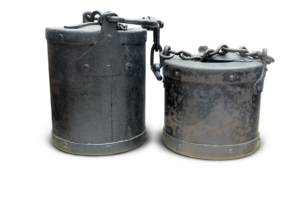
The Virginia Highlands
At the outbreak of the war, the hills of present-day Arlington County, Va., provided crucial high ground for a trio of forts that protected the Chain Bridge and Leesburg Pike, which remain key approaches to the capital: Forts Marcy, Ethan Allen, and C.F. Smith. All are interpreted and located either directly on or near the George Washington Memorial Parkway.
Owned by the NPS, Fort Marcy was built by New York and Pennsylvania troops, including the famous Iron Brigade, as well as several hundred contrabands. Forts Ethan Allen and C.F. Smith, both owned and managed by Arlington County, also preserve visible earthworks and offer interpretative trails and a peace garden. Visit parks.arlingtonva.us and search by fort name.
Joint Base Myer-Henderson Hall, the military post adjacent to Arlington National Cemetery, was the Civil War site of Forts Cass and Whipple.
Alexandria’s Sentinel
Owned by the city of Alexandria, Fort Ward contains a meticulously restored cannon battery as well as a perimeter dry moat and defensive abatis, a distinctive white entrance gate, and a small but well curated museum with rotating exhibits. The fort regularly hosts living histories, lectures, kids’ camps, and other special events. alexandriava.gov/FortWard
The Fort Circle Trail
Back across the Potomac, outdoor enthusiasts can opt to tour several fort sites on the seven-mile Fort Circle Park Hiker-Biker Trail that winds through largely forested land connecting Fort Mahan to the north and Fort Stanton to the south, passing by the sites of Forts Chaplin, Dupont, Davis, and Ricketts. Fort Dupont Park is located at about the center point of the trail and includes an outdoor stage, picnic areas, and parking.
The Big Guns
[quote style=”boxed” float=”right”]“The extensive fortifications erected by the labor of our troops enable a small garrison to hold it against a numerous army.” Union Maj. Gen. George B. McClellan, in a report to Secretary of War Edwin Stanton[/quote]
Just south of the District of Columbia, Fort Foote in Fort Washington, Md., offers both Potomac River views and a chance to get up close to intimidating 15-inch Rodman cannons. At 25 tons apiece, the cannons could send a 440-pound round shell sailing over three miles. In February 1864, a sizable crowd of civilians came to the fort just to witness the firing of one of the massive guns.
Contraband Communities
Many forts protected so-called “contrabands” during the war, escaped slaves who were often employed to construct and maintain these fortifications. The NPS and American University have embarked on an effort to interview current community members who have discovered ancestors who worked on the Civil War defenses. Visit www.nps.gov and search “civil war descendants” to learn more.
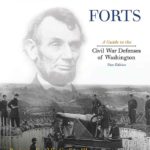 Mr. Lincoln’s Forts
Mr. Lincoln’s Forts
Mr. Lincoln’s Forts: A Guide to the Civil War Defenses of Washington, by Benjamin Franklin Cooling III and Walton H. Owen is the definitive guide to D.C.’s forts. The deeply researched book offers histories of each of the forts, engineering drawings, and other rich details about these defenses.
Local Color
Marked by a giant Ferris wheel, National Harbor is a shopping and dining district on the Potomac River that is close to several forts in Maryland and D.C., and just across the river from Alexandria. A must-see is “The Awakening,” a 70-foot five-part statue by sculptor Seward Johnson of a giant emerging from the earth. Climbing on the giant’s hand, beard, or foot is encouraged!

